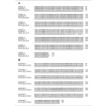
Development and characterization of 20 polymorphic microsatellite markers for the white-bellied pangolin Phataginus tricuspis (Mammalia, Pholidota).
Sign Up to like & getrecommendations! Published in 2020 at "Molecular biology reports"
DOI: 10.1007/s11033-020-05511-6
Abstract: Pangolins, or scaly anteaters, have recently been flagshiped as one of the most illegally traded mammals, and as a corollary, as potential intermediate hosts at the origin of the COVID-19 pandemic. In order to improve… read more here.
Keywords: white bellied; polymorphic microsatellite; bellied pangolin; pangolin phataginus ... See more keywords

Development of highly polymorphic microsatellite markers for Campanula glomerata L. (Campanulaceae).
Sign Up to like & getrecommendations! Published in 2021 at "Molecular biology reports"
DOI: 10.1007/s11033-021-06839-3
Abstract: BACKGROUND Campanula glomerata L. (Campanulaceae) is a self-incompatible, insect-pollinated herb occurring in calcareous grasslands, and is declining and (critically) endangered in many parts of its European distribution range. It often exists as small and isolated… read more here.
Keywords: campanula glomerata; glomerata campanulaceae; highly polymorphic; polymorphic microsatellite ... See more keywords

Isolation and characterisation of 16 polymorphic microsatellite loci for the sooty tern (Onychoprion fuscatus; Sternidae), a super-abundant pan-tropical seabird, including a test of cross-species amplification using two noddies (Anous spp.)
Sign Up to like & getrecommendations! Published in 2017 at "Marine Biodiversity"
DOI: 10.1007/s12526-017-0773-5
Abstract: We isolate and characterise 16 polymorphic microsatellite loci for the super-abundant, pan-tropical sooty tern (Onychoprion fuscatus), facilitating population genetic studies. In 70 samples from two breeding colonies, the total number of alleles per locus ranged… read more here.
Keywords: loci; super abundant; polymorphic microsatellite; pan tropical ... See more keywords

Characterization of 13 polymorphic microsatellite loci in the Japanese land leech.
Sign Up to like & getrecommendations! Published in 2018 at "Parasitology international"
DOI: 10.1016/j.parint.2017.10.002
Abstract: We developed 13 polymorphic microsatellite loci of the Japanese land leech (Haemadipsa japonica; Haemadipsidea) using an Illumina MiSeq sequencing approach. A total of 42,064 nuclear DNA contigs were filtered for microsatellite motifs, among which 30,873… read more here.
Keywords: loci; polymorphic microsatellite; land leech; japanese land ... See more keywords

Development and characterization of polymorphic microsatellite markers in Rhododendron simsii (Ericaceae)
Sign Up to like & getrecommendations! Published in 2017 at "Plant Species Biology"
DOI: 10.1111/1442-1984.12125
Abstract: A set of 14 polymorphic microsatellite markers has been developed and characterized using FIASCO (fast isolation by AFLP of sequences containing repeats) methods for the garden plant, Rhododendron simsii Planch. Forty-one R. simsii individuals showing large… read more here.
Keywords: polymorphic microsatellite; development characterization; rhododendron simsii; microsatellite ... See more keywords

Polymorphic microsatellite markers demonstrate hybridization and interspecific gene flow between lumbricid earthworm species, Eisenia andrei and E. fetida
Sign Up to like & getrecommendations! Published in 2022 at "PLoS ONE"
DOI: 10.1371/journal.pone.0262493
Abstract: The lumbricid earthworms Eisenia andrei (Ea) and E. fetida (Ef) have been used as model organisms for studies on hybridization. Previously they have been identified by species specific sequences of the mitochondrial COI gene of… read more here.
Keywords: eisenia andrei; polymorphic microsatellite; andrei fetida; gene ... See more keywords

Isolation and Characterization of 18 Polymorphic Microsatellite Loci for the Endangered New Zealand Black-Fronted Tern (Chlidonias albostriatus)
Sign Up to like & getrecommendations! Published in 2017 at "Waterbirds"
DOI: 10.1675/063.040.0311
Abstract: Abstract. Eighteen polymorphic microsatellite loci were isolated and characterized from the endangered Black-fronted Tern (Chlidonias albostriatus), a species endemic to New Zealand. The loci were initially tested on seven individuals spanning the entire breeding range… read more here.
Keywords: loci; polymorphic microsatellite; tern chlidonias; fronted tern ... See more keywords

Development of 15 polymorphic microsatellite markers for Ficus virens (Moraceae)1
Sign Up to like & getrecommendations! Published in 2017 at "Applications in Plant Sciences"
DOI: 10.3732/apps.1600101
Abstract: Premise of the study: Ficus virens (Moraceae) is distributed widely in South and Southeast Asia, Melanesia, and northern Australia, and it is also cultivated outside its original northern range limit in southwestern China. Therefore, the… read more here.
Keywords: polymorphic microsatellite; ficus virens; virens moraceae; microsatellite markers ... See more keywords

Genetic signatures of polymorphic microsatellite loci in the Ambiguous silver pomfret, Pampusargenteus (Teleostei, Stromateidae)
Sign Up to like & getrecommendations! Published in 2018 at "ZooKeys"
DOI: 10.3897/zookeys.810.25602
Abstract: Abstract Pampusargenteus is a broadly exploited pelagic fish species, commonly misidentified as Pampusechinogaster. Genetic variation and population structure in Pampusargenteus was studied based on seven microsatellite loci. The observed high average allele number, heterozygosity values,… read more here.
Keywords: loci ambiguous; microsatellite loci; polymorphic microsatellite; genetic signatures ... See more keywords